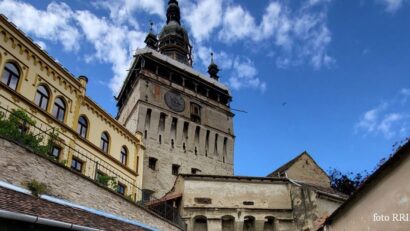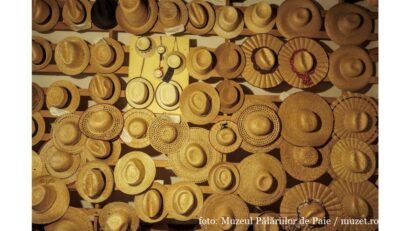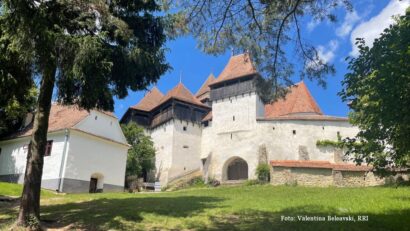Adventure Travel in the Carpathians
Adventure seekers should look no further than the Carpathian Mountains for an adrenaline-packed holiday.

Daniel Onea, 14.02.2013, 13:38
We start off in Alba County, where we met Constantin Chesculescu, the owner of a guesthouse focusing on horse riding activities. It all started from his love for horses, adventure and tradition. Our guest invites you to mount the back of a horse and have a ride across mountains and valleys, up in the fresh air of the highlands. You have two programmes to choose from: a three-day package, known as Aventura Carpatica and an eight-day package, which is run under the heading ”Romanian Villages”. As part of the eight-day package, in the first two days tourists will get acquainted with their horses, says Constantin Chesculescu. Then in the third day:
Constantin Chesculescu: “We start an expedition in the Cindrel mountains. We depart from the Rahau, a village nearby the town of Sebes, and we’re heading to Jina, a village neighbouring Poiana Sibiulu, both localities being famous for their sheep farming activities. Waiting for us there is a traditional dinner, then we set off again, this time towards Crint, a place in Cindrel Mountains. We focus on the villages in Marginimea Sibiului, since each spot has its unique beauty and something special to offer: hearth-baked bread, fresh ewe cheese, completely homemade”.
We go back through the Cindrel mountains, but this time our route is different. All along the trip activities are interactive. Tourists participate in cooking or in barbecue activities. Also, if during one of the expedition days the horses need to rest, we’ll take tourists to Sibiu on ATVs. Constantin Chesculescu told us how much it costs to embark on such a horseback adventure trip in the Romanian Carpathians.
Constantin Chesculescu: ”Horse riding is an all-inclusive service. The tourist won’t have to pay anything more after having booked such a holiday package. One day on horseback costs 120 Euros, all-inclusive. In the seven-day package we also have two days with no horse riding and then the price goes down to 55 to 60 Euros, depending on accommodation and menu. We thus resume Romania’s knightly tradition before World War II and I am happy we’ve got so many families that want to bring up their children in that spirit. Working with horses is very instructive, it trains your patience, brings you closer to nature, to animals and keeps you away from computers and the cell phones.”
Valentin Gheorghe is the manager of a company specializing in adventure tourism. For two years now, he has mainly been focusing on the Carpathian Arch area: Penteleu, Sibiu, the mountains around Buzau and Vrancea counties, mainly due to the wilderness of those places. With details on the offer, here is Valentin Gheorghe:
”Foreign tourists would rather take a route off the beaten track. So, the most appropriate offer would be the one including several survival scenarios. By means of ATVs or other means of transportation, participants are taken to a wild area and from there, jointly with the monitors, they will have to find their way back to civilization. Apart from acquiring basic survival techniques, which are used in military training, tourists will practice all sorts of sports without realizing everything had been previously arranged for them. For instance, if they want to get from one point to the other they can only do that crossing the river, and they’re likely to find some canoes somewhere. Actually, under the circumstances, they cover a very long distance in only one hour. Then they reach a precipice, and there they will find abseiling equipment. In two or three days’ time they reach civilization again. “
We asked Valentin Gheorghe, who promotes this adventure programme and whether tourists need any special equipment:
Valentin Gheorghe: “Our tourists need not bring any kind of equipment, everything is provided by our company. We’ve had quite a lot of foreign tourists, coming from Germany, France, and Hungary, most of them on individual holiday packages. So far we’ve only had groups of tourists coming from Poland, where there is a similar organization with which we have been working for a few years. This year we plan to go into new markets: Israel, Spain and, hopefully, the United Arab Emirates.”
We end today’s journey in the Apuseni Mountains, where an area of 55 square km hosts nearly 2,000 caves. Spaeleology tourism or cave tourism is quite fascinating, says Cristi Varciu, from Apuseni Adventure:
Cristi Varciu: “I’ve been working as a guide for French tourists for four years, in spring I work with tourists from Israel and in autumn with Czech and Polish tourists. These are the three major categories of tourists that I take around the Apuseni Mountains, and their favourite part is cave tourism. We have a very successful seven-day package, in which we walk from one tourist site to the other, while the luggage is taken by off-road cars to our next accommodation place. So basically, in the morning we leave with just a backpack and see a string of natural and ethnographic marvels, and in the evening we get to another guesthouse, where the baggage is already waiting for us. The next morning, we move on. It’s not only a journey in the Apuseni Mountains, but also a journey in time, because I take tourists to pre-historic times, for instance the Fire Glacier, the oldest cave inhabited by people, as well as to modern times, to see the mountains from the paraglider.”






























